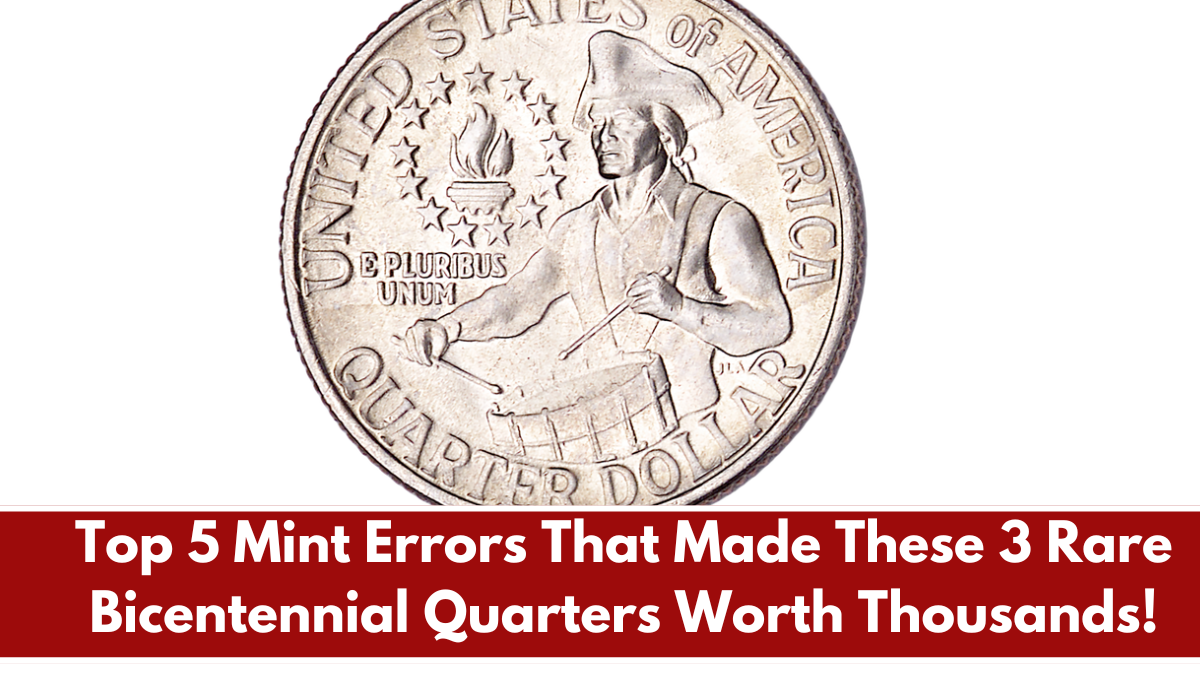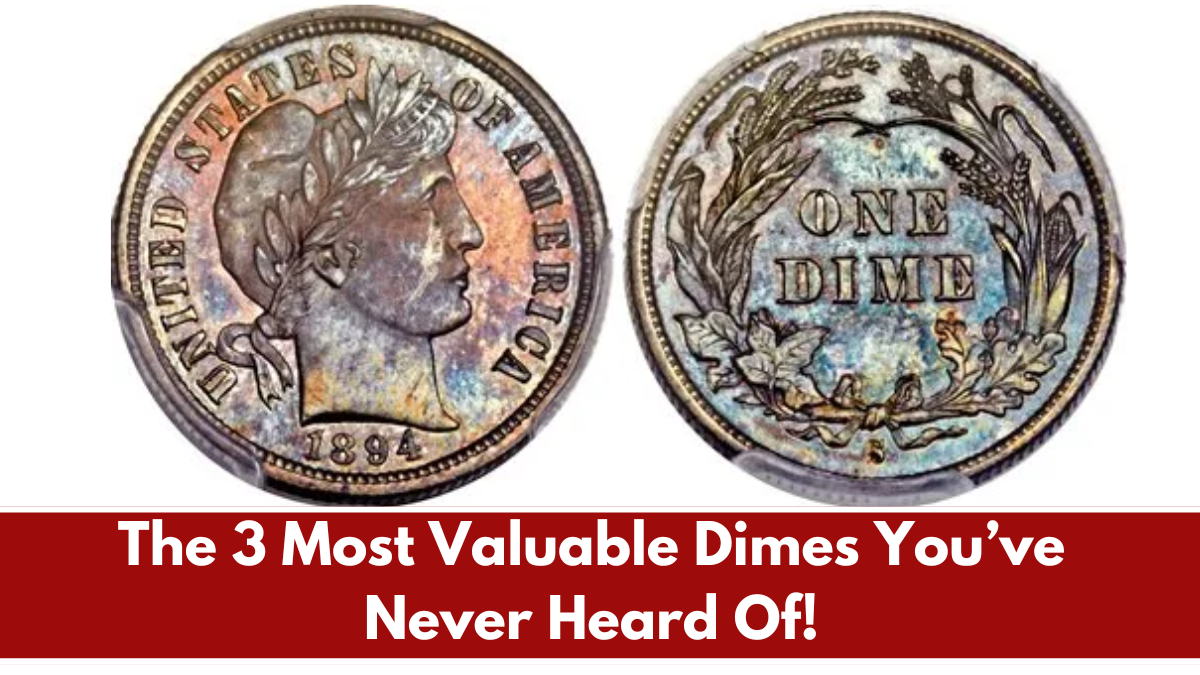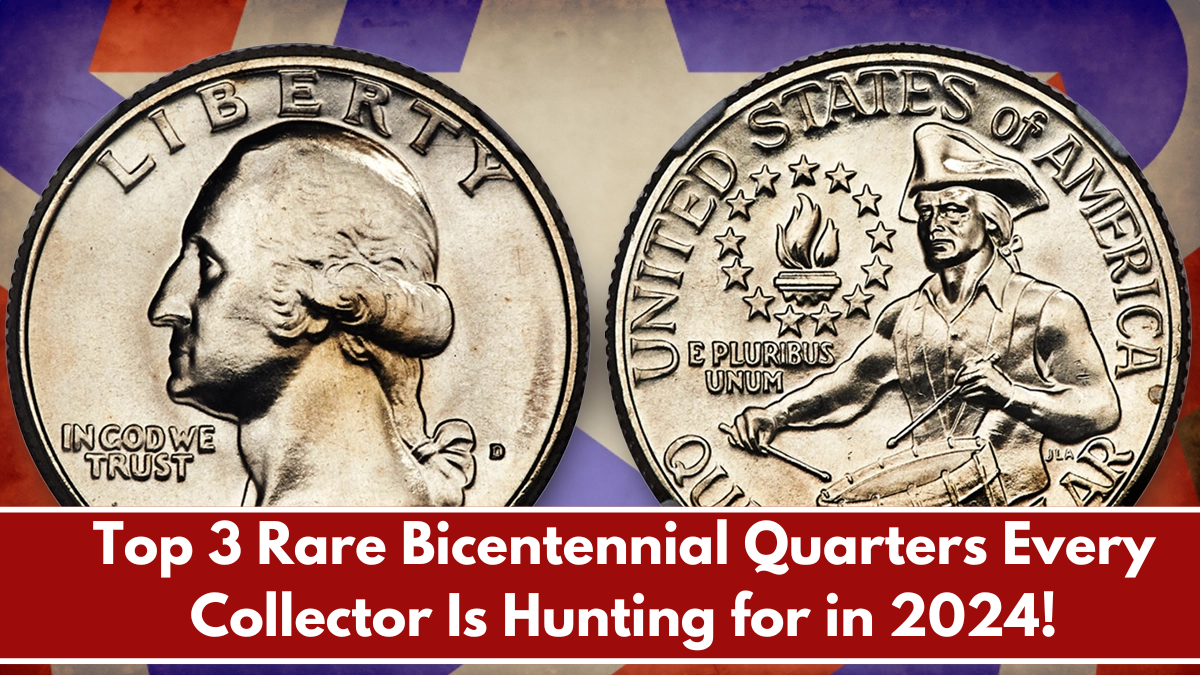Bicentennial quarters, celebrated for their dual-dated “1776-1976” design, hold a unique place in U.S. coinage history. While millions were minted for circulation, a select few with rare mint errors have become exceptionally valuable, selling for thousands of dollars. These errors, created unintentionally during the minting process, turn ordinary coins into extraordinary collector’s items. Let’s explore the top 5 mint errors that have transformed three Bicentennial quarters into high-value treasures.
1. Double Die Obverse (DDO)
The double die obverse error results from a misalignment during the hubbing process, causing parts of the design to appear doubled. Some Bicentennial quarters exhibit this error, making key details like “Liberty” and the date appear distorted. Collectors prize these coins for their visual uniqueness, with some fetching $3,000 to $5,000 in auctions. The more pronounced the doubling, the more valuable the coin becomes, making it a must-have for error coin enthusiasts.
2. Off-Center Strikes
Off-center errors occur when the coin blank is not correctly aligned with the dies during minting. Bicentennial quarters with this striking error often display a partial design, with some missing portions. Depending on how off-center the strike is, such coins have sold for $1,000 to $2,500, especially if the dual-dated feature remains visible. These coins are especially attractive for collectors seeking something truly unique.
3. Clipped Planchets
A clipped planchet error happens when the coin blank is improperly cut, leaving a crescent-shaped edge missing. This error is highly sought after in Bicentennial quarters due to its rarity. High-grade examples of clipped planchet Bicentennial quarters can bring in prices between $500 and $1,500. These distinctive coins are eye-catching and stand out in any collection, making them extremely valuable.
4. Missing Clad Layer
The Bicentennial quarter is a clad coin, meaning it has an outer layer of copper-nickel over a core of copper. Occasionally, one side of the clad layer is missing, leaving a copper-colored surface. These errors are highly collectible, often commanding prices between $2,000 and $3,500. A missing clad layer not only adds rarity but also gives the coin a visually distinctive look, increasing its desirability.
5. Die Breaks and Cuds
Die breaks, commonly referred to as cuds, occur when a piece of the die breaks off, leaving raised metal on the coin’s surface. Some Bicentennial quarters with prominent cuds on the reverse drum design are especially valuable. Depending on the size and location, these coins can be worth $1,000 to $2,000. These unique imperfections are highly collectible, as they reflect the underlying manufacturing process and make the coin stand out.
Mint errors elevate standard Bicentennial quarters into prized collectibles, offering both historical significance and monetary value. Whether it’s a double die obverse or a missing clad layer, these errors represent a fascinating aspect of minting history. For collectors and investors, these rare quarters are not just coins—they are treasures that tell a unique story of the minting process and the accidental mistakes that turned them into valuable artifacts. These rare errors have transformed typical Bicentennial quarters into highly sought-after treasures.
FAQ’s:
1. What makes mint errors valuable?
Mint errors are rare and unique, making them highly desirable among collectors. Their value depends on the type, visibility, and rarity of the error, which is what drives up demand.
2. How can I identify a double die obverse Bicentennial quarter?
Look for visible doubling on the lettering or numbers, particularly in “Liberty” and the date. A magnifying glass or magnifying tool can help spot this error more clearly.
3. Are off-center strikes common in Bicentennial quarters?
No, off-center strikes are relatively rare and increase the coin’s value, especially when a significant portion of the design remains intact and visible to collectors.
4. Where can I find rare error Bicentennial quarters?
Check your pocket change, visit coin shows, or consult reputable dealers and auction sites specializing in mint error coins, where these rare coins often appear for sale.
5. Should I get my mint error coin graded?
Yes, professional grading from organizations like PCGS or NGC can authenticate and significantly increase your coin’s value by verifying its error and condition.













